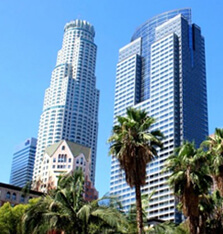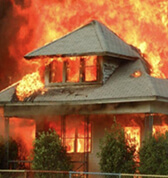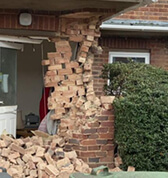
Why You Should Revisit Your Fire Insurance Coverage this Summer
When was the last time you reviewed your homeowner’s insurance policy? If you’re like most Los Angeles homeowners, you might not even remember the last time you picked it up! Unfortunately, this common oversight could end up costing you thousands if you’re forced to file a homeowner’s insurance claim.
In this article, we’re going to offer tips for reviewing your insurance policy, and we’ll tell you why you should revisit your fire insurance coverage this summer. Let’s get started!
Why do I need to update my policy?
Imagine your insurance policy is like a Polaroid photo. It provides coverage for your property and your belongings precisely as they were when the policy was issued. In other words, coverage limits are fixed at the time you secured the policy. Over time, you have purchased new belongings, and you may have even made a few upgrades on the home. These changes might not be covered unless you notify your insurance provider and update your policy.
In general, it is a good idea to review and update your homeowner’s insurance policy every year. To ensure that you have the resources to rebuild after a loss, you will want to update your home inventory and increase policy limits if necessary. If you are still not convinced, we are going to review some of the most common changes that would impact your policy.
1. Home Improvements
Home improvements can impact the value of your home. These changes can be inside the house or outside on your property. Installing a sprinkler system, constructing a storage shed, or building an in-ground pool are all changes that could require a policy upgrade. All these projects increase the appraisal value of your home, and it’s critical that your coverage limits reflect that investment. Additionally, some home improvements (like installing a security system) can even help you secure discounts on your policy premium.
2. New Purchases
If you have recently made significant purchases, you may need to add policy riders to guarantee total coverage. High-value items like wedding rings, art, instruments, and family heirlooms jewelry may not be covered under the standard policy language. Consider extended coverage to protect your equipment if you have established a home office during the COVID-19 pandemic.
3. Rising Construction Costs
When you select an insurance policy, you will be forced to choose between two primary policy types: replacement cost coverage and actual cash value coverage. As the name suggests, replacement cost coverage provides the funds that you need to replace damaged property with new materials of the same kind and quality. Actual cash value coverage only pays for the value of your belongings, minus depreciation. So, how does that relate to construction costs?
Depending on the type of policy you have and when it was updated, it is possible that you do not have sufficient coverage to rebuild your home. The price of building materials and labor varies from year to year, so it is essential to look into the potential cost of new construction. Additionally, the Los Angeles real estate market changes rapidly, and your property values can fluctuate. We recommend looking up the latest per-square-foot replacement costs in your area, which should be available from your local home builders association. You can also ask your insurance provider about extended or guaranteed replacement policies, which protect you from inflated labor and material costs following such catastrophes.
Why is it so important to revisit my fire insurance coverage?
Although all coverage types are deserving of review, we have chosen to focus on fire damage because it consistently has the most significant impact on Los Angeles homeowners. Wildfires have become increasingly common throughout Southern California, and they wreak havoc on unprepared homeowners. A standard homeowner’s policy will cover your home and personal property against fire and smoke damage. Unfortunately, if you live in an area with high fire risk, you may have a fire exclusion and/or law limit coverage hidden in your policy.
What should I do if fire damage is excluded from my policy?
If your policy does not cover fire damage due to your location, you still have options to acquire coverage. Purchasing a stand-alone fire insurance policy through a surplus carrier can help fill in the gaps. In California, homeowners can also access plans via FAIR (Fair Access to Insurance Requirements). The FAIR program exists to help cover high-risk properties when homeowners have trouble obtaining coverage through another insurer.
To qualify for a state-backed FAIR plan, you might need to prove that you were denied fire insurance by three companies before you can qualify. These plans can be costly because they are meant as a last line of defense.
Final Thoughts
We hope that this article has helped you understand why you should revisit your fire insurance coverage this summer! If you have recently suffered a loss, do not hesitate to contact us to discuss your claim. Our main objective is to get you paid every dollar you are owed under your policy.



































